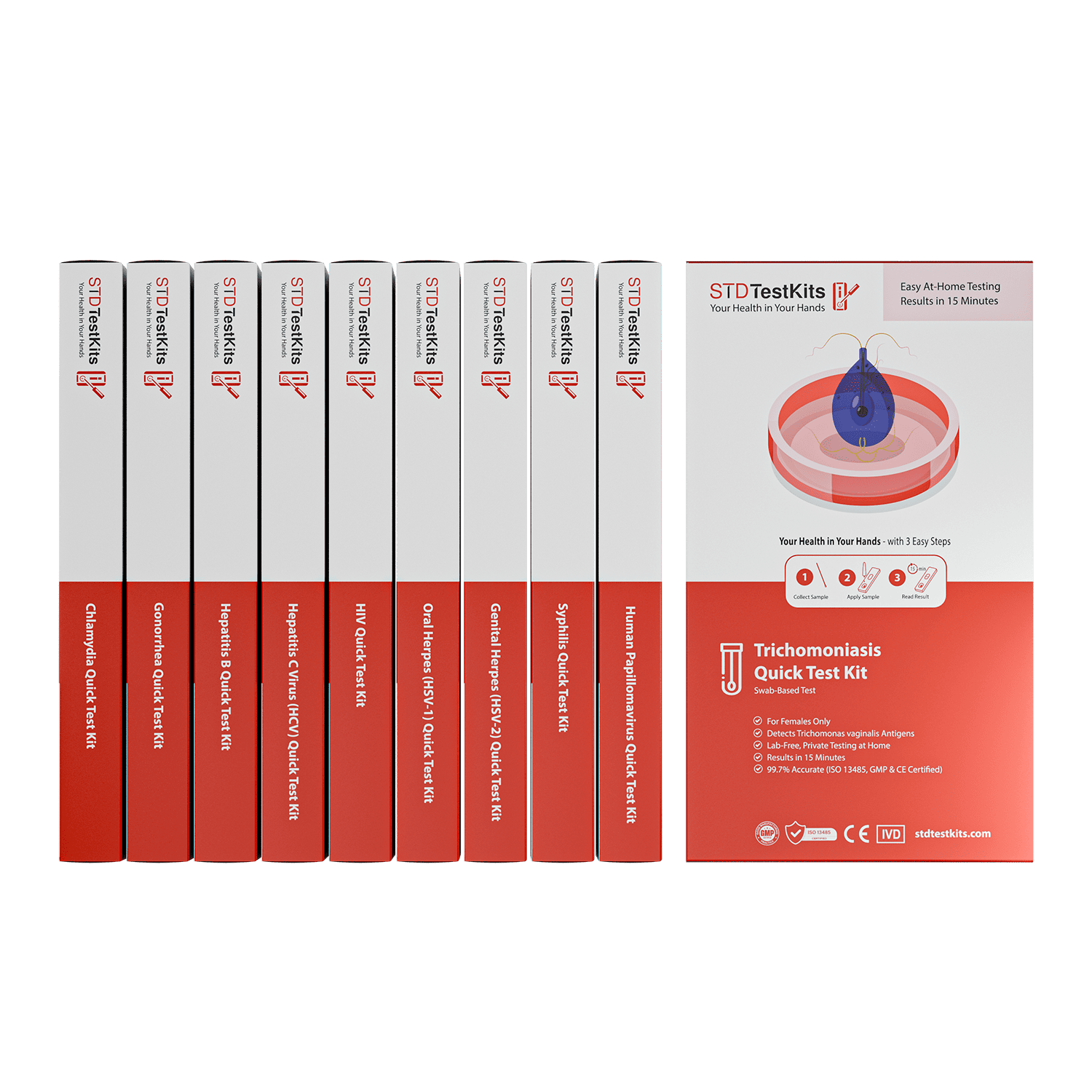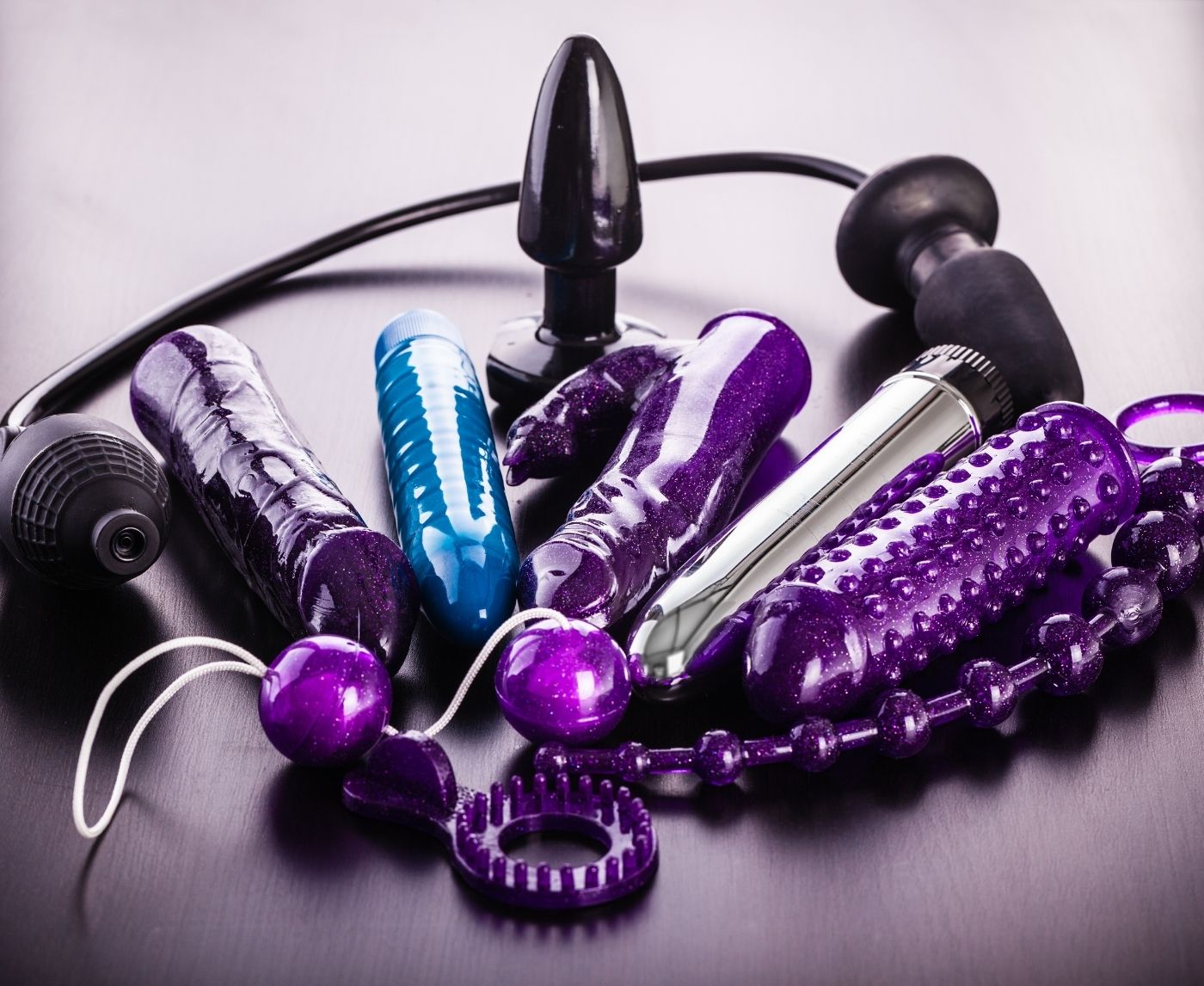Can You Get an STD from Oral or Toys? These Kits Can Tell You
Quick Answer: STD symptoms after vacation sex can take days or even weeks to show up. Testing is recommended 1–3 weeks after exposure depending on the infection, and earlier if symptoms appear.
“I Thought It Was Just a Hookup” , When Vacation Fun Turns Into Real Worry
Diego, 28, spent a week in Playa del Carmen with college friends. The first few nights were tame, bars, beach games, one tequila too many. But by day four, the vibe had shifted. He connected with someone at a club, and they ended up back at her rental. “We used a condom at first, but... it came off,” he says. “We were both drunk, and I honestly didn’t think much of it.”
A week later, back in Texas, he noticed something. “Burning when I peed. I thought maybe it was dehydration, or even a UTI. But then the discharge started. That’s when I panicked.”
Diego isn’t alone. Vacation sex, especially spontaneous or alcohol-fueled, often involves skipped condoms, misremembered details, or assumptions like “they seemed clean.” According to the CDC, condom use drops significantly during casual vacation hookups, especially in party-heavy destinations like Cancun, Ibiza, and Phuket.
What many don’t realize is that sexually transmitted infections don’t always show up right away. That "safe period" you think you're in post-trip? It might just be the infection’s waiting game.
How Long Before STD Symptoms Show Up After Vacation Sex?
The big mistake most people make is assuming they’re in the clear if nothing shows up a few days after sex. But infections don’t work on your timeline. Each STD has its own window period, the time between exposure and when it can be detected reliably on a test.
That means you can feel fine, even test negative, and still be infected.
Table 1. STD symptom appearance vs testing window. These ranges vary by immune system, gender, and testing method.
Think of it like this: you might have brought home something you can’t see yet. And if you're already sexually active again post-trip, you could unknowingly pass it on. The best time to test depends on what you're checking for, but when in doubt, a combo test kit covers your bases and gives you peace of mind fast.
Order a discreet combo STD test kit if you’re worried. It’s fast, private, and doesn’t involve awkward clinic waits or explaining your spring break regrets to a stranger in scrubs.

People are also reading: Syphilis Is Surging in Alabama, Don’t Wait to Get Tested
When Your Body Sends Mixed Messages
One of the hardest parts about post-vacation sex panic is not knowing what’s normal. Is that itching just from shaving? Is the redness from saltwater or friction? Is this discharge just your body adjusting, or something worse?
Kiana, 31, flew to Tulum for her best friend’s bachelorette trip. “We hooked up in the pool,” she says. “It was spontaneous, a little reckless. But it felt fun, not dangerous.” Two weeks later, she developed a yeast-like irritation that wouldn’t go away. “I treated it like a yeast infection, over-the-counter creams, probiotics, the works. But nothing helped.” Eventually, she tested positive for trichomoniasis.
It’s a common story. Many people confuse STD symptoms for other conditions, yeast infections, UTIs, allergic reactions, even ingrown hairs. The truth is, symptoms of sexually transmitted infections can be subtle, delayed, or completely absent.
No Symptoms? You Could Still Be Infected
Here’s the kicker: not all STDs come with signs. In fact, CDC data estimates that up to 70% of people with chlamydia and 50% with gonorrhea show no symptoms at all, especially in the early stages.
And just because you feel okay doesn’t mean you are okay. Infections can quietly cause inflammation, damage reproductive organs, or increase your risk of transmitting or acquiring HIV during future sex. This is why testing matters, even when your body is quiet.
Picture this: You’re back at work, focused on emails and errands. You feel fine. You forget about Cancun, about that last night in the club, about how the condom may have slipped. Until your next partner tells you they tested positive, and suddenly everything you didn’t know becomes urgent.
STD Testing After Travel: Clinic, Mail-In, or Rapid?
Not all tests are created equal, and timing affects everything. Here’s how the options stack up when you’re back from a trip and wondering what to do.
Table 2. Testing method comparison post-vacation. Choose based on urgency, privacy needs, and what you may have been exposed to.
If you’re already spiraling, don’t wait days to calm your anxiety. A rapid STD test kit you can use from your bedroom may be all it takes to get answers today.
False Negatives and Retesting: The Trap of Testing Too Soon
Many people rush to test as soon as they feel panic, which is understandable. But testing too early can backfire.
Tests depend on being able to find a lot of the virus or bacteria in your body. If you test positive a few days after being exposed, the virus may not be strong enough to show up, even if you are infected. This is especially true for HIV and syphilis, which can take longer to show up on tests because they need more time to grow.
Take Jason, 24, who hooked up with someone he met on a cruise. He tested three days after flying home. It came back negative, and he relaxed. A week later, he noticed unusual discharge, and a second test confirmed gonorrhea.
Retesting isn’t about paranoia, it’s about accuracy. When in doubt, test once after a week or two, then again around day 30 if you had unprotected sex or symptoms persist.
And remember: testing isn’t just about you. It’s about everyone you might sleep with next.

People are also reading: Why Syphilis Is Spiking Among Straight Men, and Why It Matters
When the Test Comes Back Positive
Finding out you have an STD after what was supposed to be a stress-free trip can feel like a punch to the gut. You might feel stupid, angry, ashamed, even dirty. But let’s get this straight: you’re not broken, reckless, or alone. You’re human.
Shira, 35, didn’t even have full-blown sex in Cabo. “It was just oral,” she said. “I didn’t think I could get anything from that.” Weeks later, a painful blister near her mouth sent her spiraling into Google hell. Her doctor confirmed it was oral herpes (HSV-1). “I blamed myself for being stupid,” she admits. “But then I learned how incredibly common it is.”
The CDC estimates over 50% of Americans under age 50 have HSV-1, and most never know it. Herpes, HPV, even syphilis, many of the most common STDs can be passed through oral sex, kissing, or skin-to-skin contact.
The good news? Most STDs are treatable, and many are curable. But treatment begins with testing, and honesty.
What to Say to Your Partner (Even If It Was a Vacation Fling)
This part sucks. We won’t sugarcoat it. But telling someone they may have been exposed to an STD is an act of courage, not shame. It protects their health. It shows integrity. And it might even bring unexpected relief, because chances are, they’re wondering too.
Here’s how Andre, 27, handled it: “I messaged her. Just said, ‘Hey, I tested positive for chlamydia. I wanted you to know so you can take care of yourself.’ That was it. No drama. She was grateful I said something.”
If you can’t or don’t want to reach out directly, some health departments offer anonymous partner notification tools. And if the partner was a tourist or local you’ll never find again? You still owe yourself the clarity of treatment and peace of mind that you did what you could.
Why You Might Need to Retest, Even If You Were Treated
Antibiotics are powerful, but your immune system and timing still matter. If you were treated before your infection fully took hold, or too soon after exposure, you may need to test again to be sure it’s gone.
This is especially true for STDs like gonorrhea and chlamydia, where reinfection can happen easily if your partner wasn’t treated too. It’s also true for syphilis, where antibody levels need to be tracked over time.
For herpes, there’s no cure, but there is suppression. And the decision to go on antivirals is personal. But don’t let a single test result be your endpoint. Let it be a pivot, toward awareness, routine care, and better protection for your future self.
Privacy, Discreet Testing, and Traveling with Your Sexual Health in Mind
Maybe this experience shook you. Maybe it changed how you think about condoms, communication, or your own body. That doesn’t have to be a bad thing. It can be a wake-up call to plan better next time.
Here’s the truth: the best kind of sexy is the kind that includes safety. You can travel with test kits in your bag. You can ask about last test dates without killing the mood. You can use protection without apology. And you can get tested quietly, privately, from home, without turning your health into a public event.
Rapid kits ship in discreet packaging, don’t require a clinic visit, and can give results in minutes. If you’re still wondering or worried, STD Rapid Test Kits can help you figure it out, without anyone looking over your shoulder.
“I Didn’t Think It Could Happen to Me”, But It Did
For every story you hear about someone bringing home more than a tan, there are dozens more left untold. Not because they didn’t happen, but because people are scared to talk about them. Ashamed. Embarrassed. Or convinced it was their fault.
Priya, 22, had her first real hookup while backpacking in Costa Rica. “It felt safe,” she said. “We talked, he seemed sweet, he even pulled out a condom.” A month later, she tested positive for chlamydia. “I was devastated. I kept thinking, ‘I’m smarter than this.’” But intelligence doesn’t cancel out biology. And protection doesn’t always mean perfection.
These infections don’t target people who are “reckless” or “promiscuous.” They happen to planners, perfectionists, introverts, moms, med students. They happen when the mood is right and the lights are low and the tequila is strong and the questions feel awkward. They happen because we’re human, and humans crave closeness.
And the truth is, the real damage isn’t in the mistake. It’s in what happens next. Ignoring symptoms. Delaying care. Letting shame drive the silence. That’s where things get risky. Not when you said yes to the hookup, but when you say no to yourself by avoiding the test.
So maybe you’re back home now, suitcase still half-unpacked, brain replaying those moments wondering what they meant. You might never know the answer to that, but you can know what’s going on with your body. And knowing is powerful.
Testing is self-respect in action. It’s not punishment, it’s protection. It’s the story you get to rewrite, right now, with clarity instead of fear.
FAQs
1. Do I really need to test if I feel totally fine?
Yes. That’s the trap. Most people with STDs feel totally fine, at first. Chlamydia and gonorrhea are famous for flying under the radar, especially in people with vaginas. Just because your body’s quiet doesn’t mean it’s in the clear. Silence isn’t safety. It’s a reason to test.
2. How long should I wait before testing after a hookup?
Depends on what you’re testing for. Gonorrhea can show up within a week. HIV or syphilis? You might need to wait 3–6 weeks for a reliable result. A solid move: test once at the two-week mark, then again around day 30 if anything felt risky. Think of it like checking your passport and your bags, you want to catch what you might’ve brought home.
3. Can I really get an STD from oral sex?
Yep. Herpes, gonorrhea, chlamydia, and even syphilis can be passed through oral, especially if there were cuts, stubble, or a cold sore you didn’t notice. If your vacation fling involved lips or tongues anywhere, don’t assume you’re exempt.
4. I used a condom, so I’m good, right?
You’re better off than without one, for sure. But condoms aren’t magic shields. If it slipped, broke, or didn’t cover everything (like with herpes or HPV), risk is still on the table. Use it as a filter, not a final answer.
5. What if it was just once? One night, one time?
Unfortunately, it only takes one time. STDs don’t care about your body count, they care about exposure. Whether it was a week-long resort romance or a single tequila-fueled moment on the beach, it’s still worth checking in with your health.
6. Can alcohol or travel mess with my body and make it feel like an STD?
Absolutely. A yeast infection, dehydration, even chafing from sand or swimsuits can cause irritation that mimics an STD. But unless you’re a doctor with a microscope in your luggage, don’t guess. If it burns, itches, smells off, or just won’t go away, test.
7. What should I say to someone I hooked up with if I tested positive?
Keep it simple. Try: “Hey, just wanted to give you a heads up, I tested positive for std. You might want to get tested too.” No need for drama or guilt-tripping. It’s about protecting them, not punishing yourself.
8. What if I can’t reach the person I hooked up with?
Then you focus on you. Get tested, get treated if needed, and move forward. Not every partner is reachable, especially after vacation hookups. But taking care of your own body is still powerful, and enough.
9. Are at-home tests actually legit?
They are if you get them from a verified provider. Many rapid tests use the same tech clinics do. Just follow the instructions carefully, wait the right number of days post-exposure, and avoid peeing or eating right before sample collection if the kit says so. And yes, they’re discreet. No nosy pharmacist, no clinic waiting room.
10. What if my test is negative but I still feel weird?
Don’t gaslight yourself. If something feels off, your body’s trying to tell you something. Retest in a couple weeks, try a different test type, or talk to a provider. Sometimes it’s not an STD at all. Sometimes it is. Either way, you’re not overreacting. You’re being smart.
You Deserve Peace of Mind, Not Panic
This isn’t about shaming you for hooking up on vacation. It’s about honoring the part of you that’s worried, confused, and maybe scared. That part deserves support, not judgment.
Testing is how you take care of that part. It’s not about catching you in the act, it’s about catching an infection before it causes damage. It’s about protecting future partners, healing your body, and giving yourself the full picture.
If you’re in that post-trip headspin wondering what that bump, itch, or silence really means, don’t spiral. Just test.
This at-home combo test kit checks for multiple common STDs and gives you fast, private results. Whether it’s been days or weeks since your vacation, it’s not too late to get answers.
How We Sourced This Article: We combined current guidance from leading medical organizations with peer-reviewed research and lived-experience reporting to make this guide practical, compassionate, and accurate.
Sources
1. Sexually Transmitted Infections | Travelers' Health – CDC
2. After Travel Tips | Travelers’ Health – CDC
4. How Long Does It Take for an STD to Show Up? – Healthline
5. STI Screening Recommendations – CDC
6. Sexual Health and Travel – Canada.ca
About the Author
Dr. F. David, MD is a board-certified infectious disease specialist focused on STI prevention, diagnosis, and treatment. He blends clinical precision with a no-nonsense, sex-positive approach and is committed to expanding access for readers in both urban and off-grid settings.
Reviewed by: S. Renae Thomas, PA-C | Last medically reviewed: October 2025
This article is just for information and should not be used as medical advice.







